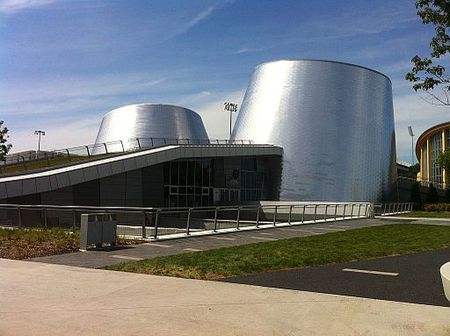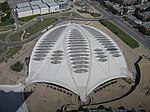Rio Tinto Alcan Planetarium
Mercier–Hochelaga-MaisonneuveMuseums established in 2013Museums in MontrealPlanetaria in CanadaScience museums in Canada

The Rio Tinto Alcan Planetarium (French: Planétarium Rio Tinto Alcan) is the successor to the Montreal Planetarium, and is located in the Espace pour la Vie, near the Olympic Stadium and the Biodome in Montreal, Quebec, Canada. The new installation has two separate theatres as well as exhibits on space and astronomy. It was officially opened in April 2013. The building, designed by Cardin + Ramirez et Associés, Architectes, is certified as LEED Platinum.
Excerpt from the Wikipedia article Rio Tinto Alcan Planetarium (License: CC BY-SA 3.0, Authors, Images).Rio Tinto Alcan Planetarium
Esplanade Sun Life, Montreal Mercier–Hochelaga-Maisonneuve
Geographical coordinates (GPS) Address External links Nearby Places Show on map
Geographical coordinates (GPS)
| Latitude | Longitude |
|---|---|
| N 45.5607 ° | E -73.5507 ° |
Address
Planétarium Rio Tinto Alcan
Esplanade Sun Life
H1V 1B3 Montreal, Mercier–Hochelaga-Maisonneuve
Quebec, Canada
Open on Google Maps









